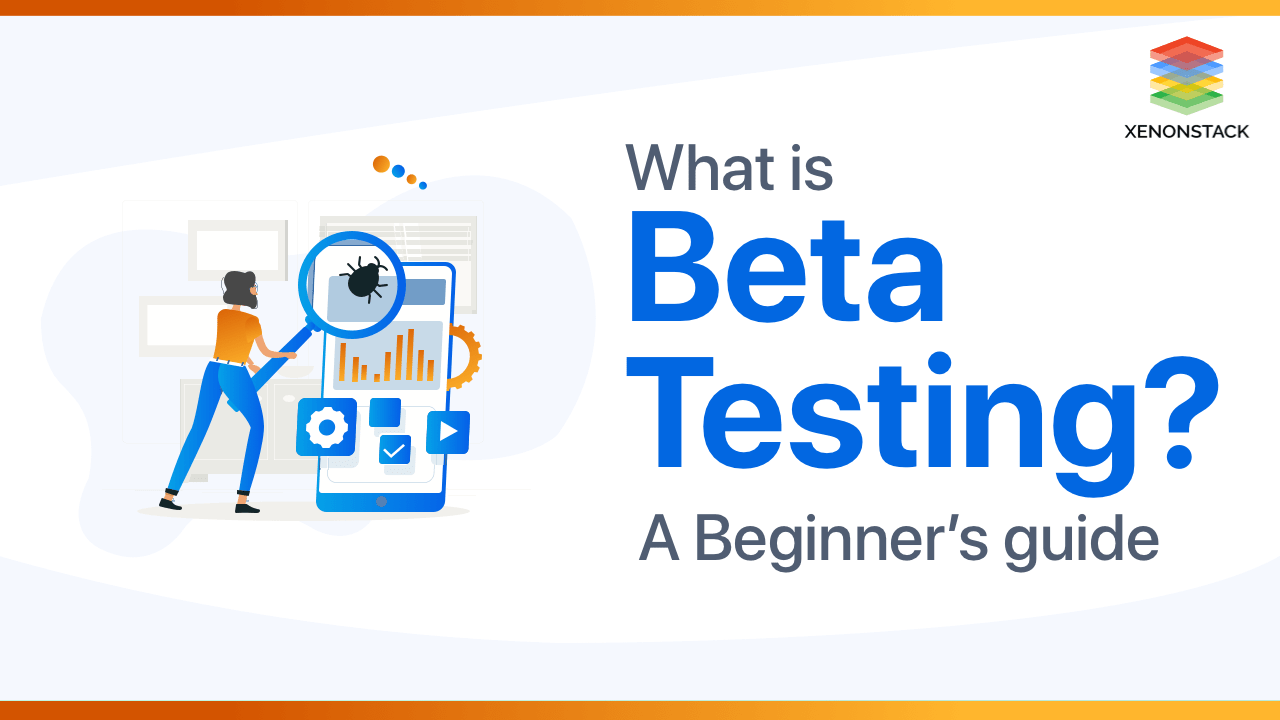
What is Exploratory Testing?
It "emphasizes personal freedom and responsibility" in testing because every individual tester tests, learns, and iterates throughout, not looking for a pre-designed answer that cannot deviate but also looking for the gaps that can be found randomly. Fewer test scripts don't mean a lack of preparation. Instead, it leads to fewer constraints on the tester. Exploratory tests are all about testers exploring an application to identify potential bugs. Testers jump on a process of investigation and discovery to effectively test a product. That's what it is all about.
Agile is a methodology that allows continuous iteration of development and testing all through the software development life cycle. Click to explore about our, Role of Automated Testing in Agile Enterprise
Learning
Testers need a complete understanding of the app, website, or platform to test it effectively. Testers need to understand valuable information like industry awareness, company details, and competitive benchmark data, and the tester will have the major factors needed to execute tests successfully.
Designing
In scripted testing, the test has specific test cases defined, whereas it has no preset path or predetermined conditions. Exploratory testers can conduct tests in a way that they deem fit.
Executing
Coherent test execution is also a critical best practice. In it, the tester has the freedom to execute a test as soon as they would like to do so when the application is ready to test. When the test is written, it can be conducted, and testing can be started. This means nobody is waiting on scripted requirements, and work can be conducted relatively seamlessly.
A process to check whether the system accepts a user's requirements. Click to explore about our, User Acceptance Testing
What is Adhoc testing?
Adhoc tests are usually performed to break down the system and use non-standard methods. The most surprising thing about Adhoc Testing is that there is no test development method for generating test cases. A process typically performed to find loopholes in software. Ad hoc testing is often performed without documentation, as no documented test cases exist.
Types of Adhoc Testing
Buddy Testing
In buddy testing, tests are conducted with the team effort of at least two people. The team is usually made up of at least one software tester and one software developer.
The team of the two people works together on a particular module to create valid test cases. This is performed so that the tester does not report errors that occur through improper test cases. This variety of testing can also be considered a combination of unit and system testing.
Monkey Testing
In monkey testing, testers randomly perform the testing on the module without having any test case aiming to break the system. The randomness of the approach used in this testing is called 'monkey testing.' In monkey testing, the software under test is provided by random inputs, for which their corresponding outputs are observed.
Pair Testing
Pair testing is much like buddy testing. But here, a pair of only the testers work together on the modules for testing. Two testers work together to share ideas, opinions, and knowledge over the same machine to identify errors and defects.
Testers are paired for the testing according to their knowledge levels and expertise to get a different insight into any problem.
A process that allows the user to check that the provided data, they deal with, is valid or complete. Click to explore about our, Data Validation Testing Tools and Techniques
Exploratory Testing in Agile
Agile development depends on quick reduplication and release. From the agile quality point of view, every new change in the system must be tested as soon as possible after the change is made. This reduces the risk of late defect detection and the associated costs. It becomes an efficient tool in agile development by reducing the time spent authoring and preparing tests while optimizing feedback time. This way, it aligns with the Agile manifesto's second value: "working software over comprehensive documentation."
Reasons for Considering Exploratory Testing in Agile
- It helps to uncover many hidden and undetected bugs that are very difficult to detect in normal testing.
- It helps to improve performance in terms of coverage of scripted and non-scripted test scenarios.
- It covers the essential parts of your requirements by helping testers understand your application and its capabilities.
- Help testers learn new methods, test strategies, and think outside the box.
A type of testing in which individual units or functions of software testing. Its primary purpose is to test each unit or function. Click to explore about our, Unit Testing Techniques and Best Practices
Exploratory Testing vs. Adhoc Testing
| Adhoc Testing | Exploratory Testing |
| Ad hoc testing initially starts as an understanding application and then works with the actual testing process. | It begins by exploring the application while learning. |
| Documentation is not a basic requirement for this type of testing. The QA team is always involved in testing without specific documentation. | Documentation is required in Exploratory Testing. To ensure quality it’s required to document the details of the testing. |
| Adhoc testing is about the excellence of the testing. | It is about learning and researching applications. |
| Testers who will test the application should be familiar with the sequence of operations. | As your learning context expands, exploratory tests help you gain additional knowledge about the test results. |
| This is only one-time executable testing. Testers test it’s once at a time, however, if there is any problem found in the test then it's repeated. | A testing approach that combines the results of tests and creates new solutions. |
| Usually, this works for business problems and increases the knowledge of the application. | Categorize problems and compare them to problems found in the past. This helps to reduce the time cost. |
| Experienced software test engineers are not required to perform ad hoc tests. | This should always be done by a professional. |
| It needs some planning to start and carry on | It doesn’t take much time to start. |
| This test essentially connects the subsystem to your application and helps you find holes during execution. | Test the application elements by reviewing them and providing a plan. |
Inexperienced testing teams neglect to prioritize DB features in terms of significance, which is essential to saving effort and time. Click to explore about our, Database Testing Types and its Best Tools
What is the process of Exploratory Testing?
The processes are listed below:
Classification
- Classifies common types of defects found in the past
- Analyze the root cause analysis (RCA) of these faults
- Identify the risks and prepare ideas to test the application.
Test Charter
- It starts with test ideas.
- The test charter assists in understanding how end-users will use the system.
- Involve information like what to test, how it can be tested, and what needs looking at.
Timebox
- Using the time box method, a pair of testers work together for an uninterrupted, stipulated period that is not less than 90 minutes.
- Timebox sessions encourage testers to react to the system response and prepare for the right outcome.
Reviewing results
- Analysis of the defects
- Lessons learned
- Analysis of coverage areas
A software development approach where developers write test cases for enhancements or new features before we write any code. Click to explore about our, Golang Unit Testing
What are the best practices?
- Application purpose and the Business Objectives: Getting knowledge of the technology, application's purpose, and business needs will help you identify critical areas that need to be tested.
- Pushing Developers to fix Defects: A feedback loop during software test cycles will enhance developers with the feedback they need to fix flaws and defects. Collaborative surroundings allow software testers to work simultaneously with developers who will assist in sharing test outcomes.
- Choose the Right Testing method that meets your Goals: Select the suitable testing method that makes it straightforward for the tester to perform the tests and the stakeholders to interpret the consequences and results.
- Keep Clear and Concise Record: Keep clear and concise documentation of what you have done, how you perform it, and what you discover. This will show how intense the session was, allowing you to optimize the test method in the future.
- Using Exploratory Testing Along with Automated Tests: When test automation is scripted to look at the accuracy of projected behaviors or patterns in the software, exploratory testing helps to uncover critical concerns hidden in scripted tests that could potentially break the software.
- Do not rush on Tools: There are too many tools those can use to do the exploratory test, from entirely automated planning tools to video capture and logging tools to walls full-packed with procedure diagrams and feature descriptions with time box plans, even if the only tools carried out exploratory testing are a pen and some paper.
If its Testing performed correctly, then it will prevent the wastage of resources in the future.Click to explore about our, Big Data Testing Best Practices and its Implementation
Conclusion
Exploratory testing is explained in many ways. Don't let fear, queries, or uncertainty get in the way of the possibilities to expand your testing. It is performed to identify real-time bugs. Also, it is more often used to detect bugs during the UAT of the system. So, if it is used early in the stage, we can avoid many bugs.
- Discover more about Microservices Testing Strategies
- Explore here about Data Validation Testing Tools and Techniques


